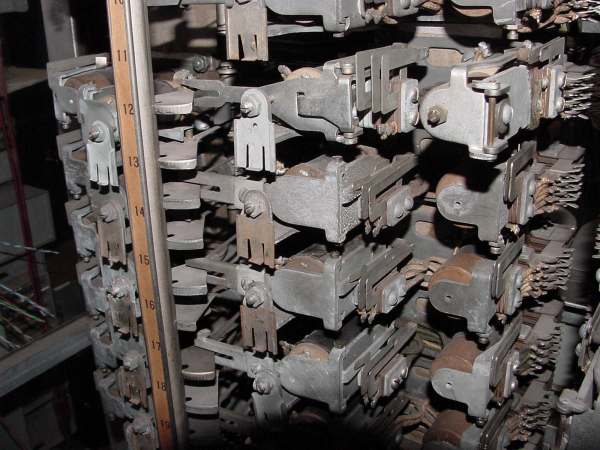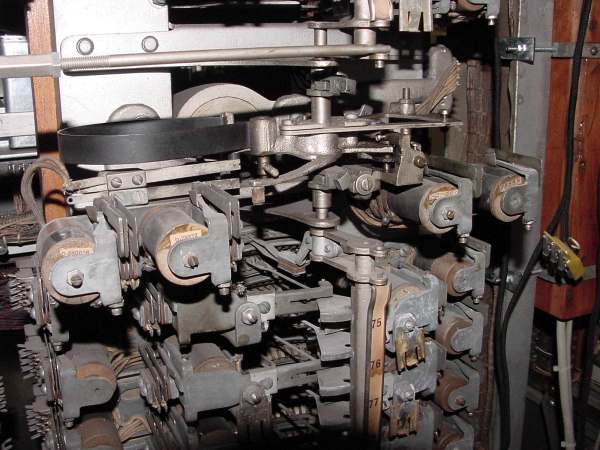
Here's some more detailed photos of the PABX!
This is a closeup view of a few Keith lineswitches. Each extension on the switch is associated with one lineswitch. When an extension goes off hook, the lineswitch assigns that extension a selector. The selector returns dial tone and awaits the first dialed digit.

The Masterswitch drives an arrangement of vanes that makes sure that every idle lineswitch is pointing at an idle selector. Each time a phone goes off hook, its associated lineswitch plunges in to grab the idle selector. The masterswitch, then, moves to the next idle selector. A lockout circuit is provided to keep the masterswitch from futilely flailing back and forth when all of the selectors are busy.

This is an early local service connector. It provides no answer supervision (battery reversal when called party answers) and has no capability for dial tone. Note the early "top hat" style return spring. Excuse the paint job. Some day, I'll get to it!

The selectors used are actually an earlier vintage than the connectors. Note the wiper cords. They are wired to the back of the switch, not the test jack as the modern ones are.

This is the fuse and alarm panel. It's solid slate and very heavy. It's very heavy! The incandescent lamp is a ballast lamp that limits the current drawn from the ringing supply. The transformer on the lower left is part of the ringing supply. The alarm lamps indicate blown fuses, stuck release magnets and a stuck master switch return solenoid. There's a also a lamp that indicates failure of the Tungar charging bulb but, since I don't have one, it never lights.

All of the cross connections are made by these unusual terminal strips. Various parts of the switch terminate on the rows of pins which are then squeezed together and soldered to interconnect them. I've heard them referred to as "fishtail" terminals. That's a spare lineswitch sitting below. You can see the end of a Teltone Touchtone to pulse converter on the right. I added the "front wiring" to pick up some of the sleeve leads that were required for various special applications.

These "cans" include the ringing and busy tone supplies as well as the interrupters, alarms and other miscellaneous things.
The remaining cans are spares.

The PAX comes with an integral protector. This is a very early Cook Electric unit with carbons and resettable heat coils.

Revised 5/27/02